
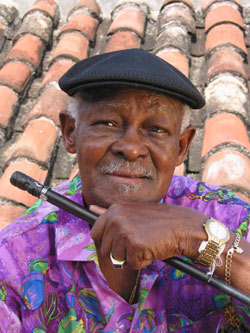




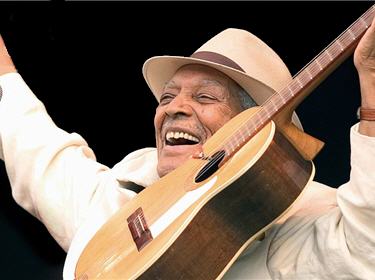 Compay Segundo
Compay Segundo
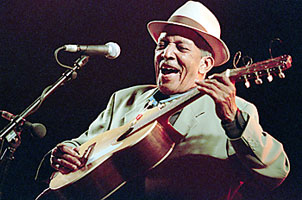
 Buena Vista Social Club
Buena Vista Social Club
 Manu Chao is considered the Bob Marley of the new millennium. This musical chameleon now carries the torch that was left behind by the late, great dread locked rasta. Manu took off like a phoenix out of the remains of Mano Negra, and now unites listeners around the world.
Manu Chao is considered the Bob Marley of the new millennium. This musical chameleon now carries the torch that was left behind by the late, great dread locked rasta. Manu took off like a phoenix out of the remains of Mano Negra, and now unites listeners around the world.
 ple of the world. Originally a Mano Negra song, Manu remixed it and Time named it the #8 song of 2007.
ple of the world. Originally a Mano Negra song, Manu remixed it and Time named it the #8 song of 2007.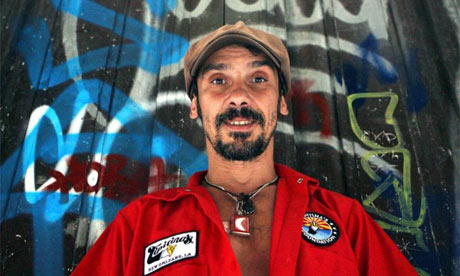 Manu Chao is the musician known as el pirata. No, he doesn't commandeer other artists' songs. This musical nomad is known for swashbuckling around the globe to the tune of his own inexplicable style. He's such a force in the international circuit, I have to dedicate two entries to the man.
Manu Chao is the musician known as el pirata. No, he doesn't commandeer other artists' songs. This musical nomad is known for swashbuckling around the globe to the tune of his own inexplicable style. He's such a force in the international circuit, I have to dedicate two entries to the man.
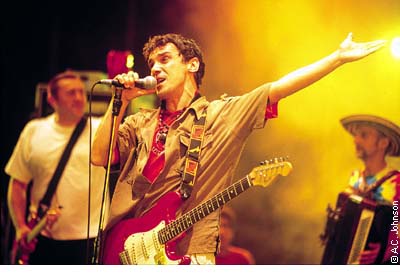




 People seem to have a love/hate relationship with pop music. The looping beats and catchy refrains are infectious enough to lodge their way into our brains for days. We publicly badmouth that hot, new single until we're safe at home to blast it through our speakers.
People seem to have a love/hate relationship with pop music. The looping beats and catchy refrains are infectious enough to lodge their way into our brains for days. We publicly badmouth that hot, new single until we're safe at home to blast it through our speakers. 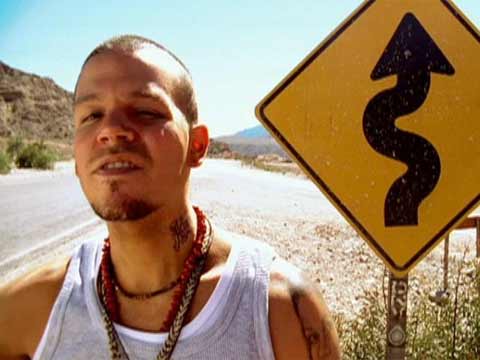



The kings of Spanish rock music are los miembros of Maná. These hombres have rocked Spanish mundo for 30 years. 30 years! They're the Mexican equivalent of U2, and they have the fan base to prove it. If millions of fans worldwide are not reason enough to give these guys a listen, consider their 50+ awards from Billboard, the Grammys and MTV.
The band even traveled to Miami, Florida in 1999 to perform an acoustic set for MTV Unplugged. Although the performance's CD only reached 83 on the Billboard Top 100, it dominated the Latin Billboard charts at number 1 for weeks.
Enough flattery, let's get back to the music. Maná does an excellent job of mixing essential base lines, guitar riffs and drum solos with indigenous Spanish music from both Latin and South America. And the lyrics are just as eclectic. The band sings of everything from faith and revolution to love and heartbreak.
One listen to the band's hit "Justicia, Tierra y Libertad" (Justice, Land and Liberty) could incite a revolution in anyone. An electric guitar drives the song while chorus chants that demand basic human necessities speak for all the unheard indios of the world. The same fervor can be heard in songs like "Nada Que Perder" (Nothing to Lose) and "Fe" (Faith).
 Now these musician / revolutionaries are not alone. Colombian-born Juanes is changing the world, raking in the records and swooning the mujeres all in a day's work. The man is a handsome diablo who could be considered the primary masculine sex symbol in the Spanish music world. If his looks and humanitarian work aren't enough, ladies, he was also honored by the government of France as a Knight of Arts and Letters.
Now these musician / revolutionaries are not alone. Colombian-born Juanes is changing the world, raking in the records and swooning the mujeres all in a day's work. The man is a handsome diablo who could be considered the primary masculine sex symbol in the Spanish music world. If his looks and humanitarian work aren't enough, ladies, he was also honored by the government of France as a Knight of Arts and Letters.
Musically, he's just as diversely attractive and his lyrics are laden with tempting innuendos. The Dominican Republic banned his hit "La Camisa Negra" (The Black Shirt) because of its sexually suggestive themes. As offensive as that might seem, Juanes and his black shirt caused even more trouble in Italy. In 2005, los italianos suspected Juanes of fascist ties with his Nazi-rallying song supporting Mussolini followers who wore black shirts. Yikes!
Understandably, this grave misunderstanding did not affect Juanes' image at all. This human rights advocate has earned numerous awards for his coordinating international music festivals. His most recent festival, "Peace Without Borders," received major media attention and plenty of criticism when it was held in (still communist) Cuba. He explained that the controversial nation is a symbol of change and that people of the world need to change as well.
Escucha!
Out of all the of Spanish-language music out right now, Maná and Juanes are two of the easiest bands to enjoy. From light, poppy dance tunes to loud, fast jams, these musicians have something for everyone. If you're learning Spanish, this is the music you should be listening to for help. The best was to learn any language is full immersion into the culture, and the slow, enunciated lyrics of Maná and Juanes practically invite aspiring Hispano hablantes. Adding to the songs mentioned earlier, here are some great places to start your lesson.
1. Maná - Angel de Amor
2. Maná - No Voy a Ser Tu Esclavo
3. Maná - Labios Compartidos
4. Juanes - Es Por Ti
5. Juanes - Para Ser Eterno
Diviertate,
DJ Gringuito
**Disclaimer - There will be no embarrassing anecdotes this week.
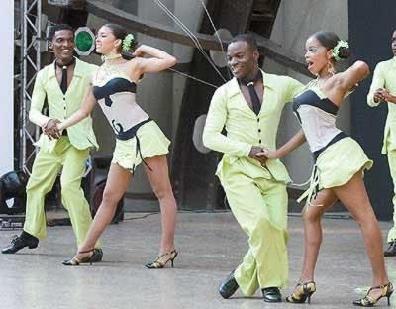
Salso: no, not the condiment, idiota.
Salsa is the term used for a wide variety of Spanish music. As a rhythm-less white guy from Southwestern Pennsylvania, I can say that this is the most exciting music that the Spanish mundo has to offer. But before I disclose all the embarrassing anecdotes of my attempts to enjoy salsa socially, a brief history lesson.
Salsa was not always known as salsa. In the revolutionary land of Cuba, salsa's precursor, son, was fused from African and Caribbean roots. I can easily say that two better music styles could not have been picked. No, not even Limp Bizkit's infamous Rap / Rock nonsense can top the upbeat tempos and audience participation that make salsa so fun. Sorry, Fred, your TRL fame cannot compete with decades of tradition.
Salsa bands are the equivalent of the big band orchestras that rocked the 30s and 40s of the Swing Era. Granted, cornerstones of the salsa band like claves and timbales had no place in the Glenn Miller Orchestra, but the two styles are quite similar in live performances. Both fill the stage with instruments to enliven the crowd onto the dance floor, and both rely on a lead vocalist to interact with the crowd.
Dayron y el Boom at Mambo Café in Mérida, Mexico showcase what to expect from the salsa experience: a full horn section, choreographed dance moves and, of course, a waterfall cascading in the background. Okay, maybe that last part is unique to Mambo Café, but you get the idea.

The major difference between these two genres is that Swing music faded into U.S. history, while Salsa continues to thrive in all areas of the Hispano hablante world. The music and dancing are embedded into Latin American culture. Everybody dances! The old couple in matching yellow outfits still move like they did when they were courting. The tough guys at the bar move their body in a dark club more than at the local gym. Back in the good ol' U.S. of A, most clubs are full of inebriated individuals trying their darnedest to practically fornicate on the dance floor. Where's the style, passion and culture in that?
Studying in México, I witnessed the craze that is salsa. From the gorgeous señorita to the lanky, ñoño,everyone knows how to dance. The innate ability to move their bodies so effortlessly is admirable. But rather than idly admire, I decided to join in the reverie.
Strike one.
My shoulder bobbing and foot stomping immediately attracted stares (as if being a half foot taller than everyone else on the dance floor wasn't enough).
In an effort to turn my luck around, I decided to approach girls asking "puedes enseñarme?" (can you teach me?).
Strike two.
If you're going to impress a member of the opposite sex on the dance floor, asking for a lesson is not the way. Embarrassment aside, failing at salsa was muchisimo more enjoyable than the classless bump and grind typical of dance clubs in the United States. Skill is required!

So I left México without any stories of sweeping a beautiful chica off her feet.
Strike three.
But in an effort to absorb some of the salsa culture, I have taken a few dance classes. Some were large groups of West Coast style salsa, and others taught New York style to small classes. Salsa truly is everywhere, and each place has its own variation of the music, dance and culture.
Now, I don't claim to be much better than I was in México, but as soon as restrictions are lifted from Cuba, you can be sure that this gringo will be on the first plane there to enjoy some cigars, mojitos, and an awkward dance or two. Who knows, maybe the mojitos will bring out the Marc Anthony in me.
Listen to any of these artists, and you'll be signing up for dance lessons as soon as you can find a place in Southeast Ohio that offers them. Qué chistoso! Good luck!
1. Celia Cruz
3. Wayne Gorbea
5. Marc Anthony
Stay spicy,
DJ Gringuito
